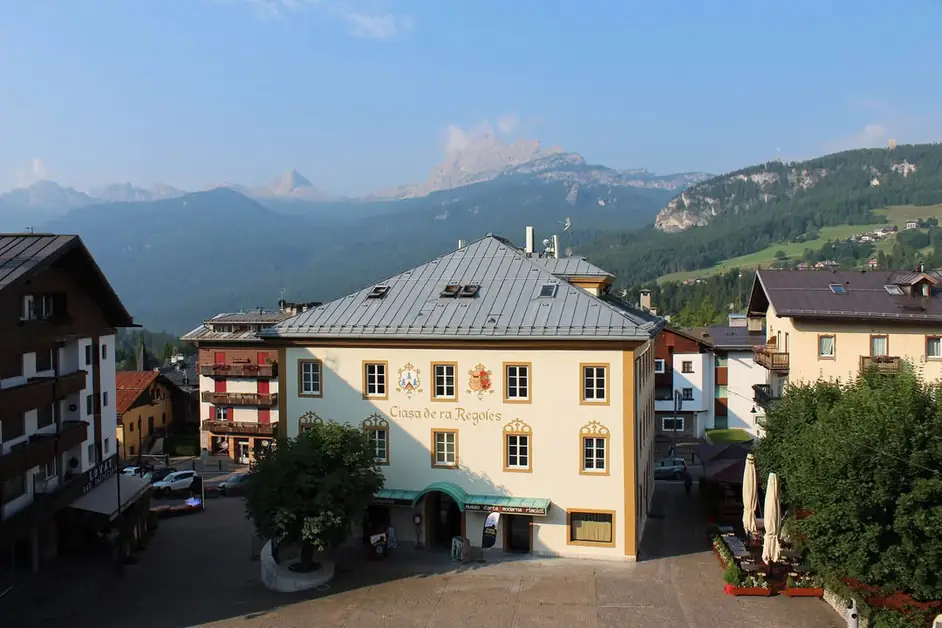Cortina d'Ampezzo a paradise for outdoor lovers
Cortina d'Ampezzo is a paradise for outdoor lovers thanks to its nature, history, and activities.

Why is Cortina d'Ampezzo considered a paradise for outdoor activity lovers?
Cortina d'Ampezzo is one of the most spectacular places in the Alpine arc. Located in the heart of the Venetian Dolomites, it is an international landmark for those who love the mountains, sports, and nature. The Dolomites, a UNESCO World Heritage site, surround the Ampezzo basin with iconic landscapes and panoramas that change color throughout the day. Here, every season offers a different experience: in winter you ski, in summer you hike, in autumn you explore silent woods, and in spring you admire the flowering meadows. Cortina is a paradise for outdoor activity lovers because it combines unspoiled natural environments, modern infrastructures, and a history that dates back to prehistoric times.
What is the oldest history of Cortina d'Ampezzo?
The history of Cortina is surprisingly ancient. There is no precise date for its birth, but archaeological research has revealed human traces dating back to the Mesolithic. A fundamental discovery is that of the mummy of a hunter found in Mondeval, which testifies to human presence in these areas as early as 6000 BC. This discovery allows us to understand how the Ampezzo basin was already a favorable environment for early nomadic groups: rich in fauna, water, forests, and natural shelters. Documented history begins in 1156, when the name Ampezzo appears for the first time in an official document. Only in 1900 did the locality assume its current name of Cortina d'Ampezzo, which today resonates worldwide as a symbol of high mountains, elegance, and tradition.
What are the Regole d'Ampezzo and why are they so important?
The Regole d'Ampezzo represent one of the oldest and most particular community institutions in the Alps. There are eleven in total and they bring together historic families of the territory who, for centuries, have managed woods, pastures, and common lands. These Rules manage the environmental heritage according to traditional criteria passed down from generation to generation. The goal is to protect forests, alpine pastures, and natural resources ensuring a balanced and sustainable use. The Rules are not just a simple administrative body: they are a cultural pillar that tells a way of living the mountain based on sharing, respect, and a sense of community. Even today, Ampezzo's woods and pastures are managed according to ancient principles, which represent an example of territorial protection appreciated throughout Trentino-Alto Adige and the Dolomites.
How did the 1956 Olympics transform Cortina d'Ampezzo?
1956 marks an epochal turning point. Cortina hosted the Winter Olympics, officially becoming one of the world capitals of snow sports. International visibility grew, as did tourism. The Olympics brought modern infrastructures, new roads, and ski facilities that transformed Cortina into an exclusive destination. With this development, however, the social structure also changed: many houses were purchased by people from other regions of Italy or abroad. Today it is estimated that about 80% of the houses no longer belong to the locals and are inhabited only a few weeks a year. This transformation tells the dual soul of Cortina: on one side tradition and local identity, on the other elite tourism and second homes. Despite this, the locality has managed to maintain its charm, balancing modernity and authenticity.
What outdoor activities can be practiced in Cortina and the Dolomites?
Cortina is perfect for those who love being outside, moving, and experiencing nature in every season. In winter, the Queen of the Dolomites offers: alpine skiing on panoramic slopes, snowboarding and freestyle, cross-country skiing with trails immersed in the woods, snowshoeing and winter trekking paths, ice skating. In summer, enthusiasts find: trekking for all levels, historic and modern via ferratas, sport climbing, cycling and mountain biking on the white Dolomite roads, horseback riding, and outdoor activities for families. Those who love nature photography can observe unique landscapes: from Monte Cristallo to the Cinque Torri, from Faloria to Tofane. Every viewpoint offers breathtaking views. Cortina is also an excellent starting point for exploring the natural parks of Trentino-Alto Adige and Veneto, with routes both technical and suitable for beginners.
Why is Cortina an ideal destination for tourists seeking nature, history, and relaxation?
Cortina manages to combine elements that rarely coexist in the same locality: a unique landscape, a millennia-old history, living traditions, and a wide variety of activities. For tourists, the reasons to visit are many: unspoiled nature, thanks to the protection of the Regole d'Ampezzo; sports for everyone, from experts to amateurs; ancient culture, documented since the Mesolithic; an elegant and relaxed atmosphere, typical of high-class alpine resorts; an Olympic history that has left facilities and a strong sporting identity. Local cuisine also enriches the experience: canederli, casunziei, speck, and mountain dishes tell the Ladin and Tyrolean tradition. Those seeking relaxation find hotels with spas, panoramic refuges, and quiet places immersed in the woods. Those who love culture can explore museums, ancient villages, and testimonies of alpine life. Therefore, Cortina is not just a ski destination: it is a place to live all year round, where every season offers something different and fascinating.



